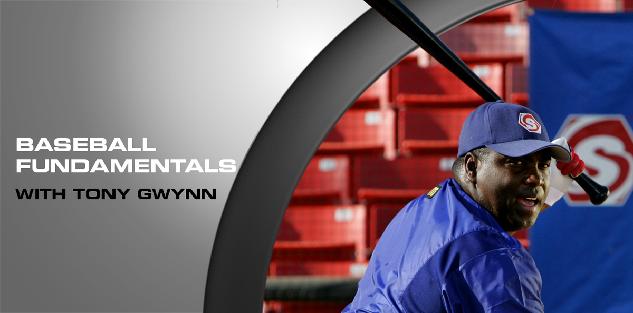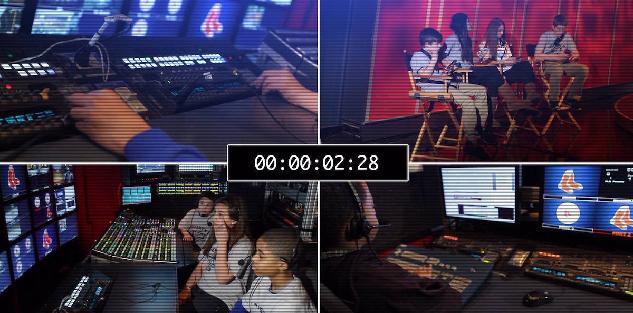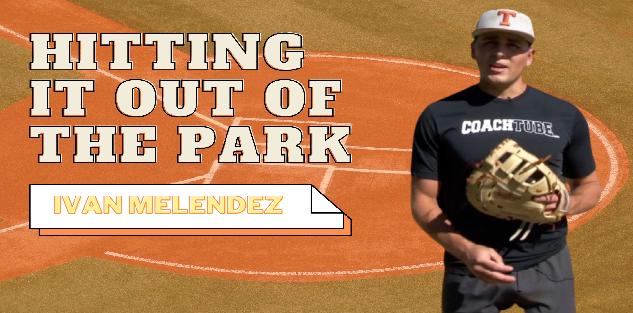Featured courses
- Understanding The Shift by Brandon Ogle
- Two Drills to Improve Outfield Movement and Communication by Grant Young
- The Ultimate Resource For Coaching Youth Baseball by Jackson Chlebowy
- Become a Master at Bunting by Brandon Ogle
- 5 Reasons Why There Is More To Good Base Running Than Just Speed by Brandon Ogle
- Three Injury-Prevention Tips For Your Offseason Pitching Program by Grant Young
- How to Teach Hitting to the Next Generation by Grant Young
- Developing Defensive-Minded Baseball Catchers by Grant Young
- 3 Baserunning Tips to Score More Runs in Baseball by Grant Young
- 5 Outfield Drills to Work on in Season by Alec Burris
- Keys For Scoring More With Runners on First and Third Base by Grant Young
- How to Develop Your Game to Become a Five-Tool Player by Brandon Ogle
- 3 Coaches Share the Keys to Running Baseball Practice the Right Way by Grant Young
- Four Drills to Sharpen a Baseball Hitter’s Vision at the Plate by Grant Young
- Four Quotes to Hit Better With Two-Strikes by Grant Young
- Four of Former MLB Pitcher Juan Nieves’ Movement-Based Pitching Drills by Grant Young
- Two Tips For Developing an Elite Baseball Bullpen by Grant Young
- Overcoming the Four Challenges of Indoor Baseball Practices Because of Weather by Grant Young
- Three Tips to Make Your Baseball Team Mentally Tougher by Grant Young
- Three Priceless Philosophies to Motivate Your Baseball Team by Grant Young
- Three Offseason Baseball Drills to Simulate Competition by Grant Young
- Three Baseball Offseason Strength and Conditioning Essentials by Grant Young
- Important Ways to Improve Your Baseball Team’s Baserunning by Grant Young
- Three Ways to Perfect Hitting Mechanics From an MLB Icon by Grant Young
- Catchers can influence pitchers...for bad or good by Drew Johnson
- Throwing Strikes and Playing Good Defense Equals Wins by Jose Ortiz
- Legendary Indiana Head Baseball Coach Bob Morgan’s Offensive Theory by Grant Young
- Tennessee Head Baseball Coach Tony Vitello on How to Practice Baserunning by Grant Young
- Three Great T-Ball Drills For Youth Baseball Players by Grant Young
- How to Manage a Baseball Pitching Staff by Grant Young
- Three Uncommon Tips to Become a Better Hitter by Grant Young
- How a Baseball Coach Can Develop Strike Throwers by Grant Young
- Drills to Develop Elite Baseball Outfielders by Grant Young
- Baseball Training Exercises to Strengthen Arm and Bat Speed by Grant Young
- How to Use Bunting to Score More Runs by Grant Young
- How To Build An Elite Baseball Infielder by Grant Young
- Three Drills to Improve Your Baseball Team's Infield Play by Grant Young
- Three Keys to Curating a Pitching Staff’s Success by Grant Young
- 3 Techniques to Develop a Baseball Player’s Hitting Approach by Grant Young
- How to Cultivate Confidence Within Your Pitchers by Grant Young
- 5 Every Day Drills To Help You Become A Better Catcher by tyler Linderman
- How to Throw A Curveball by Brandon Ogle
- How to Assemble a Lock-Down Bullpen by Brandon Ogle
- How to Throw a Sinker by Brandon Ogle
- How to be a Smart Baserunner by Brandon Ogle
- Improving a player's slugging average by Phillip Woolgar
- The 8 Fundamentals of Pitching by Drew Johnson
- How to Throw a Deceiving Changeup by Brandon Ogle
- Step Up Your Outfield Defense With These Three Drills by Jose Ortiz
- 8 Baseball Drills Every Player Should Practice by Drew Johnson
- How To Become An Elite Defensive Outfielder by Tyler Linderman
- 5 Tips For Crushing A Curveball by Johnny Grassi
- LEGENDS FOR YOUTH INCLUSION BASEBALL CLINIC by Phil
- Fourteen Ways To Turn A .300 Hitter Into A .210 Hitter by Jay P. Granat, Ph.D.
- How To Become The Ideal Leadoff Man by Brandon Ogle

5 Reasons Why There Is More To Good Base Running Than Just Speed
- By Brandon Ogle
When a baseball player is fast, the first thing everyone assumes is that they are an elite level base runner. Too often someone with speed will still find themselves getting thrown out all over the field, because they don’t pay attention to the details of becoming a great base runner. Here are 5 reasons any one from slow runners to the elite speed players can become a better base runner.
#1 Ability To Read The Ball Off The Bat
An innate ability to get a great read off the bat can be the difference between a run scored and getting stranded at 3rd base. This skill comes from practice and game experience. The more balls off the bat you see, the more often you will be able realize when you can go ahead and get a great jump and when to hold and see if the ball is caught.
Another major part of this principle is knowing your ballparks - especially your home park. If there is an unusual nook or cranny where you know the ball gets stuck, or if the left field line is really deep, you know that it takes the fielder longer to get there, which allows you to take the extra base.
Be sure to practice these reads every day, anytime you go through base running drills. Before you know it, you won’t even think about whether a ball is going to land in the gap, your instincts will just tell you to go.
#2 Ability To Read The Pitcher
Rickey Henderson is the undisputed greatest base stealer of all time. Henderson was fast, but he will tell you that studying the other pitchers and using your instincts is the reason why he was so successful.
Every pitcher’s delivery is different. Some take a long time to the plate; others incorporate a slide step to keep the runner honest. Some pitchers will change their timing every pitch, while others are locked in on the hitter. These are all tendencies you can see immediately as the game starts and that will arm your base running game.
Does the pitcher look over twice and deliver the ball every time? Then be ready to take off once you see that second glance. The first game of the 2015 baseball season, featuring Jon Lester of the Cubs versus the savvy Cardinals serves as a great example. Coming into the game, Lester has not made a pickoff attempt to first base since April 30, 2013, a period of 66 starts. The Cardinals knew this information and knew Lester wouldn’t be holding them close, so they ran every chance they got. When Lester did finally throw over a few starts later, he threw the ball into right field.
Studying pitchers and learning how to read pitcher tendencies gives you a huge advantage. In the example above Matt Holliday, someone not known for his speed, was able to take second base and get himself in scoring position because the team had studied their opponent and knew how to take advantage.
#3 Become Excellent At Sliding
There are players all over baseball that are terrible at sliding. I could write an entire article with images of professional players costing themselves outs by being a poor slider. Here’s an example using Drew Stubbs, an extremely fast base runner. He has 2nd base stolen easily but he doesn’t slide properly, his knee gets dug into he clay and he flips over 2nd base and is tagged out.
There are so many different types of slides that can help avoid tags and put you in an ideal position if done correctly. Pop slides allow you to get to the bag and get on your feet quickly in case you can take an extra base. Hook slides let you slide to the outer or inner edge of the base depending on where the throw comes from. Practice these slides over and over again from a young age. Eventually, they become second nature and you won’t end up on the Not Top 10 like Stubbs.
I also want to take the time to say that sliding incorrectly is very dangerous. Knees are shredded and fingers, wrists and hands broken every year due to bad sliding techniques. Take the time to practice and do it right because trying to come back from a broken wrist is no fun in baseball. Also, don’t dive into first base, it isn’t faster than running through the bag and it almost always ends up badly for the base runner.
Check out this course that will help you slide like a pro in no time.
#4 Work With And Trust Your 3rd Base Coach
Your 3rd Base coach is your greatest ally in becoming a better base runner. It’s important you work with your 3rd base coach and that they realize your skill level so that they can properly coach you on where to go. I know this is difficult but you should always trust your 3rd base coach. If he is telling you to hold up, then put on the brakes. If he is waving you home then turn on the after-burners.
There will be times when your 3rd base coach is wrong, however they always have the better angle at the play. If you are trying to turn your head and find the ball while running, it is going to slow you down. You will be more likely to miss a base and your body will be out of sync. Your 3rd base coach can see if there is a bobble, or if the fielder fields it cleanly and comes up throwing.
In the end, you will save yourself a lot bad mistakes by listening to and trusting your 3rd base coach. We all know there is no worse look than when you run through a stop sign and get thrown out at the plate, especially with your cleanup hitter standing on deck.
#5 Know The Situation – When To Take The Extra Base
If you read more of my baseball-related articles, you’ll find that I often come back to the principle of being the smartest player on the field and it applies to base running as well. You should always be aware of the situation. Perhaps you are a great base runner and always have the green light to steal, however, your best hitter is standing at the plate with 2 outs and the other catcher has already thrown you out once. This is probably not the best time to try to prove you can beat the catcher.
This goes back to studying the game and always paying attention. It may be okay to try to stretch a double into a triple early in the game, but you don’t want to get thrown out at 3rd for the first out in a tie game in the 9th inning. Your 3rd base coach should be helping you in these situations as well. If you are striving to be the smartest player on the field, you will more often than not put yourself in the best positions to score.
Conclusion
There are so many poor base runners in the game today that taking these steps to becoming better will set you apart from the rest of your team. Coaches notice when you are working on the little things and sometimes it is as simple as becoming great at the fundamentals: knowing the situation, becoming a better slider and trusting your coaches.



